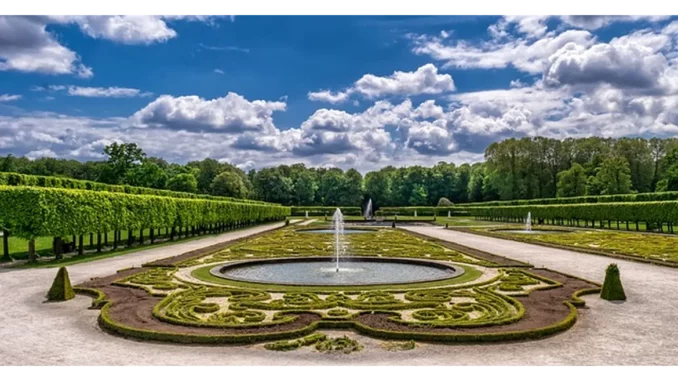
I recently had the pleasure of sitting down with the seasoned garden designer, Sarah Whitfield, to discuss some of the most common garden design problems and their solutions. Sarah has over 15 years of experience in transforming outdoor spaces and is known for her creative yet practical approach. Her insights provide invaluable tips for anyone looking to enhance their garden, whether they’re putting their property on the market or simply looking to create a more enjoyable outdoor space.
The Rush to Market: Timing is Everything
Sarah began by addressing a common scenario: homeowners rushing to spruce up their gardens because they’re about to sell their property. “A lot of people come to us wanting help for their garden as they are going to put their property on the market,” she explained. “These are the smart people that know a garden can greatly affect the value of a property.”
She emphasised the importance of timing. “The first question that we always ask, and that you should ask yourself now is – when? When will you be putting it on the market? This is really important because depending on the season, different plants are going to look their best at different times.”
For instance, Sarah mentioned that if someone plans to sell their property in June, they should avoid planting deciduous trees and instead opt for evergreens. Conversely, in September, a Weeping Cherry could be a major selling point. “You have to think ahead and choose plants that will be in their prime when your property is listed,” she advised.
Privacy Issues: Creating Secluded Spaces
One of the most common garden design problems Sarah encounters is the need for privacy. With urban gardens becoming more prevalent, creating a secluded space can often be challenging. Sarah had some straightforward solutions for this.
“Using tall, dense plants like bamboo or evergreen hedges can create an instant privacy screen,” she suggested. “For a quicker fix, consider installing trellises or pergolas with climbing plants. They not only provide privacy but also add vertical interest to your garden.”
Sarah also recommended considering garden structures. “A well-placed garden wall or even a series of tall planters can help to define areas and keep prying eyes out,” she added.
Small Spaces: Maximising Every Inch
Many homeowners face the challenge of working with small gardens. Sarah has mastered the art of making the most of limited space. “The key is to think vertically as well as horizontally,” she noted. “Utilise walls, fences, and even the exterior of your home for vertical gardening. Hanging pots, wall-mounted planters, and tiered shelves can all help to maximise planting space.”
Sarah also highlighted the importance of multifunctional furniture. “Choose furniture that can double as storage or has a smaller footprint. Foldable tables and chairs can be tucked away when not in use, freeing up space for other activities.”
Tight Budgets: Cost-Effective Solutions
Budget constraints are a reality for many garden projects. Sarah had plenty of advice for creating a beautiful garden without breaking the bank. “Start with a clear plan and prioritise the areas that will make the biggest impact. Sometimes a fresh coat of paint on existing fences or garden furniture can make a world of difference,” she said.
She also recommended looking for cost-effective plant options. “Perennials can be more economical in the long run as they come back year after year. Additionally, swapping plants with friends or neighbours can be a great way to diversify your garden without spending a fortune.”
Poor Soil Quality: Revitalising Your Garden Bed
Another frequent issue is poor soil quality, which can hinder plant growth and overall garden health. Sarah stressed the importance of soil testing. “Before planting, it’s crucial to understand what you’re working with. Soil tests can reveal nutrient deficiencies and help you choose the right amendments.”
She advised incorporating organic matter like compost or well-rotted manure to improve soil structure and fertility. “Mulching can also help retain moisture and suppress weeds, giving your plants a better chance to thrive,” she added.
Drainage Problems: Keeping Your Garden Dry
Drainage issues can quickly turn a beautiful garden into a soggy mess. Sarah had practical solutions to tackle this problem. “If you notice pooling water, it’s essential to address it promptly. Raised beds can be a great way to improve drainage and keep your plants’ roots dry,” she suggested.
Sarah also recommended installing a French drain or creating a rain garden. “These methods can effectively channel excess water away from your garden and into more absorbent areas,” she explained.
Lack of Cohesion: Creating a Harmonious Design
A common mistake many gardeners make is a lack of cohesion in their design. “It’s easy to get carried away with different plants and features, but a cohesive design is what brings everything together,” Sarah noted.
She recommended choosing a consistent colour palette and sticking to a theme. “Whether it’s a cottage garden or a modern minimalist space, having a clear vision will help guide your choices and create a harmonious look.”
Sarah also emphasised the importance of repetition. “Repeating certain plants or design elements can create a sense of continuity and flow throughout your garden,” she said.
Conclusion
Sarah Whitfield’s expert tips offer practical solutions to some of the most common garden design problems. Whether you’re preparing to sell your property or simply want to enjoy a more beautiful outdoor space, her advice can help you create a garden that is both functional and aesthetically pleasing. By considering timing, creating privacy, maximising small spaces, working within budgets, improving soil quality, addressing drainage issues, and ensuring design cohesion, you can transform your garden into a stunning and valuable asset.
George


Be the first to comment